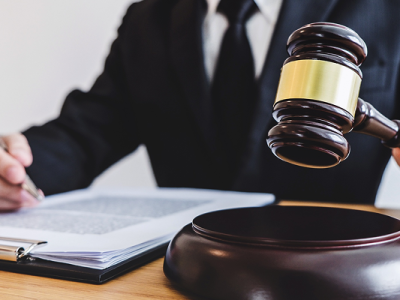
In the elaborate fabric of legal proceedings, a pivotal moment takes center stage—the bail hearing. Here, the threads of personal freedom intricately weave with the mechanisms of justice, holding profound significance. The comprehension of the nuanced choreography within bail processes is not just a legal requirement; it serves as the key to unlocking the potential for informed decision-making in a critical phase of the legal system.
This guide, with the expertise of a skilled defense attorney, embarks on an expedition into the realm of bail hearings, providing a distinctive perspective to unravel their complexities. As we navigate through the specifics, it becomes apparent that familiarity with bail proceedings transcends a mere legal imperative; it emerges as a potent means of empowerment, enabling individuals to traverse the intricacies of the justice system with clarity and confidence.
Key Takeaways
Bail hearings are a crucial juncture in the legal process, embodying the principles of justice and individual rights. At their core, these hearings navigate the delicate balance between the presumption of innocence, a cornerstone of the legal system, and the responsibility to protect public safety. Preserving the right to liberty for those accused, bail hearings ensure individuals can await trial free from undue prejudice, emphasizing the profound significance of this legal proceeding.
The bedrock of bail hearings is the presumption of innocence until proven guilty. This foundational principle safeguards individuals from prejudgment, upholding their right to freedom as they await trial. The aim is to ensure a fair and impartial legal process.
Balancing Individual Rights and Public Safety:
The heart of bail hearings lies in delicately balancing the preservation of individual rights with the imperative to protect the community. This intricate equilibrium necessitates a thorough assessment of potential risks posed by the accused, reflecting the legal system’s commitment to fairness and public welfare.
Factors Considered in Bail Decisions:
A. Flight Risk Assessment:

Ties To The Community:
Assessing an individual’s ties to the community involves scrutinizing family connections, employment stability, and community involvement. Strong ties may mitigate concerns about flight.
Past Criminal Record:
Previous instances of evading authorities or fleeing may heighten concerns about the accused’s likelihood to escape legal consequences, influencing decisions related to flight risk.
B. Risk To Public Safety:
Nature Of The Offense:
The severity and nature of the alleged offense directly impact the perceived risk to public safety. Serious charges may prompt heightened scrutiny during bail hearings.
Previous Violations Of Court Orders:
A history of disregarding court orders, such as probation or restraining orders, raises concerns about an individual’s willingness to comply with legal mandates, influencing considerations related to public safety.
C. Financial Capacity:
Ability To Post Bail:
Practical considerations involve assessing an individual’s financial capacity to post bail, and determining whether they can meet the prescribed financial obligations.
Consideration Of Alternative Forms Of Release:
Exploring alternatives to traditional bail, based on an individual’s financial circumstances, ensures a nuanced approach to pretrial release.
Legal Procedures During Bail Hearings
Presentation By The Prosecution:
The prosecution articulates compelling arguments for detention, emphasizing factors such as flight risk or danger to the community. This presentation lays the groundwork for the court’s understanding of the case.
Defense’s Response:
The defense responds by strategically demonstrating strong ties to the community and addressing concerns regarding flight risk. This phase is crucial for presenting a counter-narrative that supports the accused’s right to liberty.
Judicial Decision-Making:
Judicial decision-making is a meticulous process involving the balancing of factors presented by both sides. The court weighs the presumption of innocence, flight risk, and public safety concerns, ultimately determining whether to grant bail and imposing conditions of release that align with the complexities of each case.
Common Misconceptions About Bail:
Dispelling misconceptions about the role of bail bonds clarifies their function as a financial instrument ensuring the appearance of the accused in court, rather than a punitive measure.
Impact On Future Legal Proceedings:
Understanding how bail decisions can influence future legal proceedings provides individuals with a clearer perspective on the implications of their bail status. It underscores the interconnected nature of legal processes and the potential consequences of decisions made during bail hearings.
Rights Of The Accused During Bail Hearings:
Right To Legal Representation:
Central to the rights of the accused during bail hearings is the fundamental right to legal representation. This cornerstone ensures that individuals have the opportunity to be represented by an attorney who can advocate for their interests, present a robust defense, and navigate the complexities of the legal process.
Challenging Unreasonable Bail Conditions:
The rights of the accused extend to challenging bail conditions that are deemed unreasonable. This right allows individuals, through their legal representation, to contest conditions that may be excessively restrictive or not commensurate with the nature of the alleged offense. Challenging such conditions ensures a fair and just pretrial process.
Alternatives To Traditional Bail
Pretrial Services:
Pretrial services offer an alternative approach to traditional bail by providing comprehensive assessments of individuals awaiting trial. These services may include risk assessments, monitoring, and support services. This alternative aims to address individual circumstances while maintaining community safety.
Supervised Release Programs:
Supervised release programs provide a structured framework for individuals awaiting trial. Under the supervision of designated authorities, the accused may be required to adhere to specific conditions, such as regular check-ins or participation in rehabilitation programs. This alternative seeks to balance the presumption of innocence with community safety.
Electronic Monitoring:
Electronic monitoring utilizes technology to track the movements and activities of individuals awaiting trial. This alternative allows for a more nuanced approach to pretrial release, offering a level of supervision without the need for traditional bail. Electronic monitoring can be an effective tool in balancing individual liberties and public safety.
Conclusion: Empowering Individuals Through Knowledge Of Bail Hearings
In conclusion, a comprehensive understanding of bail hearings is essential for empowering individuals navigating the legal system. By being aware of their rights during bail hearings. Moreover, including the right to legal representation and the ability to challenge unreasonable bail conditions, individuals can actively participate in shaping the outcome of their pretrial experience.
Recapping key points:
Preserving the Right to Legal Representation: Ensures fair and equitable representation during bail proceedings, safeguarding the accused against undue disadvantages.
Challenging Unreasonable Bail Conditions: Allows individuals to contest conditions that may be overly restrictive. Moreover, ensuring that the pretrial process remains just and proportionate.
Exploring alternatives to traditional bail, such as pretrial services, supervised release programs, and electronic monitoring, reinforces the notion that the legal system recognizes the diverse circumstances of the accused. Moreover, these alternatives balance the presumption of innocence with the need to address public safety concerns in a more individualized manner.
Empowering individuals through knowledge of bail hearings involves equipping them with the tools to actively engage in their defense, make informed decisions, and navigate the complexities of the justice system. Moreover, by understanding their rights and the available alternatives, individuals can approach bail hearings with clarity and confidence, contributing to a more equitable and just legal process.
Read Also:




